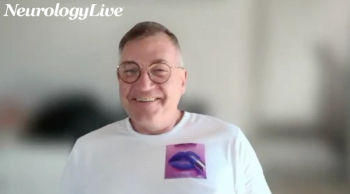
MS Misdiagnosis Is Still a Problem, But Promising Biomarkers May Be Part of the Solution
Andrew Solomon, MD, discussed inherent biases affecting MS diagnosis and how advances in imaging may help curb diagnostic errors.
Andrew Solomon, MD, began the opening lecture of the
Solomon, associate professor ofneurological sciences and Chief of the Multiple Sclerosis Division at the University of Vermont in Burlington, has written extensively on the subject of MS misdiagnosis over the years. His statement speaks to the difficulty of pinpointing the diagnosis in a condition with nonspecific and sometimes absent clinical symptoms, variable radiologic findings, multiple mimics, and a heterogeneous patient population.
Scope of the Problem
In his talk, “MS Diagnosis and Misdiagnosis, Challenges and Progress,” Solomon cited MS misdiagnosis rates ranging from 7% to 18%. Once a misdiagnosis occurs, it can persist for years. In one study of 110 patients misdiagnosed with MS, 33% had a misdiagnosis persisting for over 10 years, and 29% had used a disease-modifying therapy (DMT) unnecessarily for over 10 years. “In many of these cases, there was evidence of earlier opportunities to make the correct diagnosis,” Solomon stated. “Many patients suffered unnecessary morbidity as a result of misdiagnosis, often related to using a DMT that carries serious risks such as progressive multifocal leukoencephalopathy (PML).” One way to intervene earlier, he said, is to reassess the accuracy of the diagnosis in a patient who is referred from a previous practice, rather than accepting it at face value. “An anchoring bias means that we accept information even if we don't see any evidence that the disease has acted the way one would typically expect.”
Inherent bias may influence misdiagnosis among some patient populations, he added. A study from Argentina showed that women were at an 83% greater risk of receiving an incorrect diagnosis of MS. In this same study, misdiagnosis risk increased by 8% with each year of advanced age (P <.001). While these data might not accurately reflect practices in the US, Solomon said, “we need to check our own biases. We are just beginning to investigate how implicit biases impact our decision-making as clinicians.”
How Can Diagnostic Accuracy Be Improved?
With each subsequent revision, the McDonald criteria for MS diagnosis have become more exacting in an effort to improve diagnostic accuracy. But many clinicians, including neurologists, have difficulty applying these diagnostic criteria in clinical settings. When presented with case scenarios that included sample MRI images of MS lesions and non-MS lesions, a group of general neurologists struggled with:
- identifying which MRI images showed juxtacortical or periventricular lesions
- applying dissemination in time (DIT) and dissemination in space (DIS) criteria
- distinguishing characteristic MS lesions from white matter lesions seen in other conditions such as migraine or small vessel ischemic disease
More specific diagnostic biomarkers would go a long way toward improving MS diagnostic accuracy, Solomon said. Lack of fluid biomarkers for confirming an MS diagnosis is still a significant unmet need, but the most widely studied, neurofilament light chain (NfL), lacks specificity to distinguish MS from other causes of neuronal cell death.
Among imaging biomarkers, the central vein sign (CVS) appears to be among the most promising. CVS is a vein inside a white matter lesion on T2-weighted sequences that appears as a hypointensity, relative to the surrounding lesion. Unlike NfL, CVS is highly specific for MS, Solomon said. “We have seen in autopsy studies that almost all T2-weighted lesions in MS have a central vein.” Susceptibility-weighted imaging is the optimal technique, but CVS can be acquired via 3T or even 1.5T MRI. To be ready for clinical use, more radiologists and neurologists need training in identifying CVS, Solomon noted. “We use a proportion-based approach to look at how many lesions have a central vein, and that seems to differentiate what is MS and what is not.” In the future, automated systems and AI may be developed to aid in differentiating this signal from other variations in the lesion.
Newsletter
Keep your finger on the pulse of neurology—subscribe to NeurologyLive for expert interviews, new data, and breakthrough treatment updates.









































